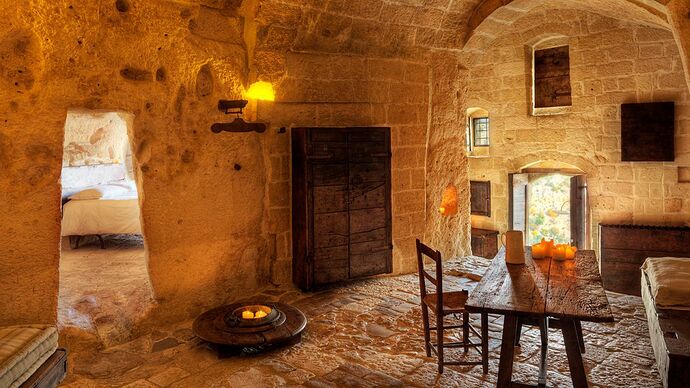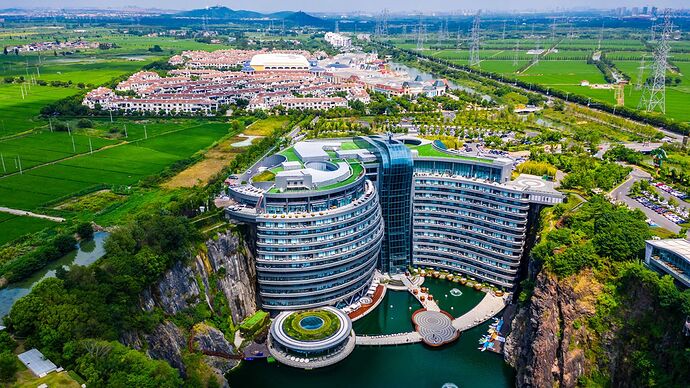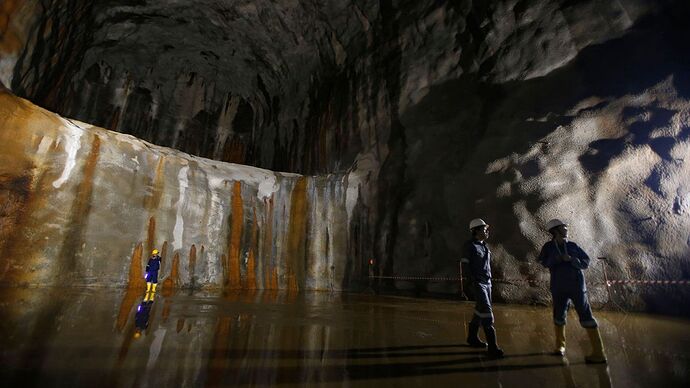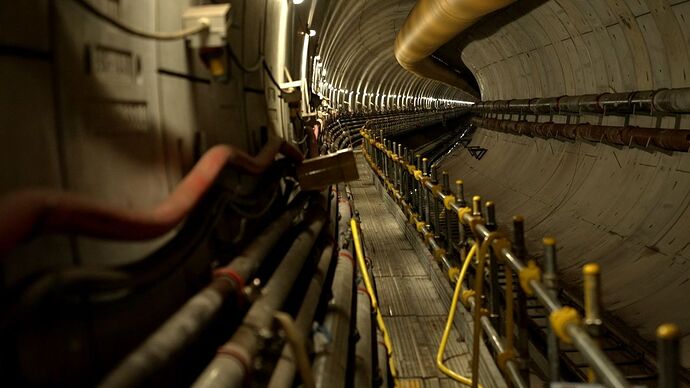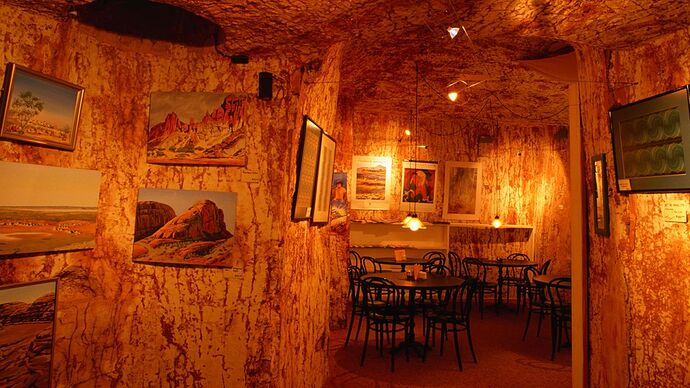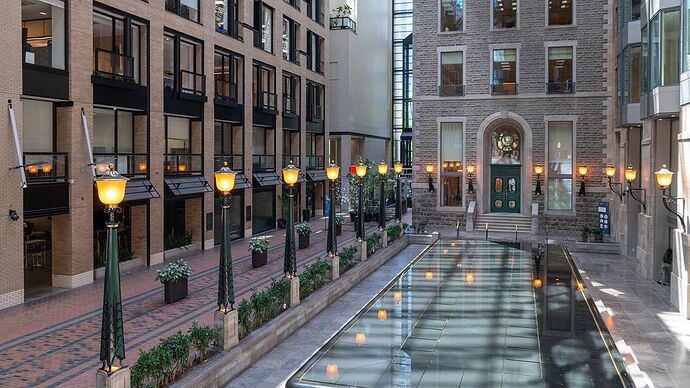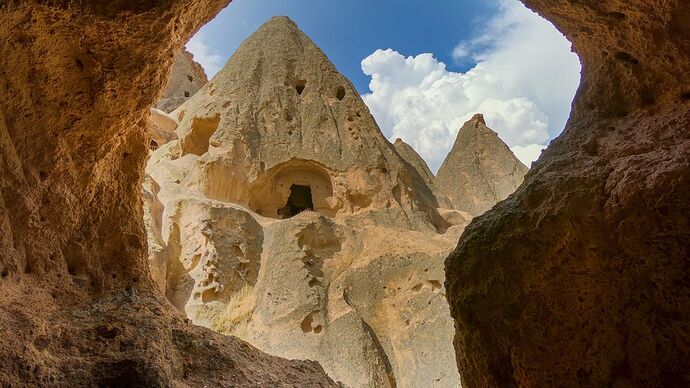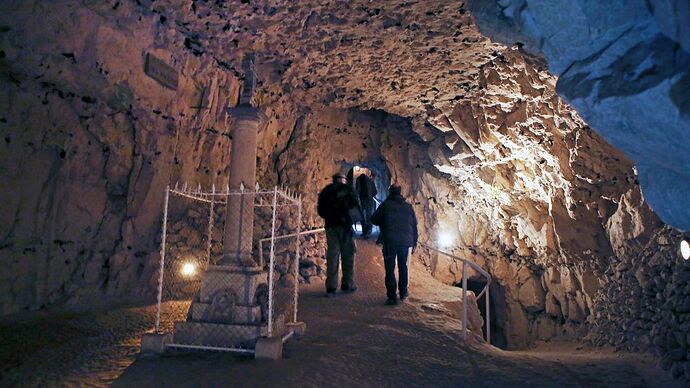Folks , please take note , who is saying this ?? Well , it's mainstream media - CNN !!!!
Why the future of our cities might be headed underground
By Samantha Bresnahan, CNN
Published 4:29 AM EST, Wed December 21, 2022
Available land space in our urban areas is at a premium. The UN estimates the global population will reach 9.8 billion by 2050, with nearly 70% living in urban centers. That's why city planners, engineers and architects are exploring underground. In Singapore, the Jurong Rock Caverns (pictured here in 2014) store liquid hydrocarbons roughly 150 meters below ground -- freeing up precious land above.
Edgar Su/Reuters/Alamy Stock Photo
Inspired by the past, subterranean developments might be the future of our cities
CNN —
There is a megaproject underway that’s not so much breaking new ground, as burrowing beneath it. In Singapore, a series of extensive tunnels are being bored into the soil some 60 meters down – below subterranean shopping malls and even the city’s metro.
Originally envisioned in the mid-1990s, the Deep Tunnel Sewerage System (DTSS) is an underground “superhighway” that could provide a blueprint for other cities around the world. It’s all part of a masterplan to conserve two precious resources: space and water.
“We were faced with the challenges of a rising population and also increasing developments for industries,” said Woo Lai Lynn, chief engineer for the project, which is run by PUB, the national water agency. “With this added demand, we couldn’t keep on relying on expanding the existing wastewater infrastructure. We had to find a solution that was more sustainable and gave us greater resilience for our water supply.”
Ad Feedback
The first phase, which finished in 2008 and cost an estimated 3.4 billion Singapore dollars ($2.5 billion), included 48 kilometers of deep sewer tunnels and a new centralized water reclamation plant. Phase two broke ground in November 2017 and is expected to be complete by 2026, said Woo.
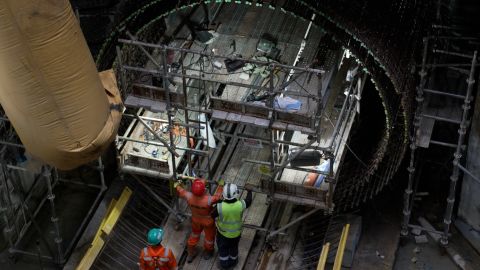
Large tunnel boring machines are digging a massive underground network beneath Singapore.
Dan Hodge/CNN
Once finished, roughly 200 kilometers of tunnels will transport wastewater to underground treatment plants. Using massive tunnel boring machines, crews are descending underground to drill the tunnels and install a network of pipes.
“The uncertainties excite me the most with this project,” said Woo. “You can’t quite tell what you’re going to encounter underground.”
Ad Feedback
The complete DTSS project will free up around 150 hectares of land above ground, according to PUB. The agency has implemented new technology based on what it learned during the first phase – including a special type of concrete that is resistant to microbiological-induced corrosion, Woo said, and embedding fiber optic cables within the tunnel linings to monitor structural integrity without needing to send as many crews underground.
Not only will it help with the water supply by treating up to two million cubic meters of wastewater per day, according to Woo, but it will continue to provide critical information and lessons about subterranean development for Singapore and beyond.
A valuable resource
With limited land available, the country has started utilizing its underground space for more than just transport over the last decade.
JTC, a government agency responsible for industrial development, is storing liquid hydrocarbons such as crude oil in five massive underground caverns. Known as the Jurong Rock Caverns, they hold the equivalent of 600 Olympic-sized swimming pools, according to JTC – all to free up precious land above.
Video Ad Feedback
This massive underground project will conserve two precious resources: land and water
01:47 - Source: CNN
As part of the underground master plan, Singapore’s Urban Redevelopment Authority (URA) commissioned Arup, an independent firm of engineers, designers and planners, to evaluate and create a benchmarking study of underground space development. One of the key takeaways was a focus on sustainability “very early” in these projects, said Peter Stones, associate engineer at Arup and one of the authors of the report.
“Space is a resource, and in our urban cities, it’s a scarce resource, so we need to manage and consume that resource in a sustainable way,” he said. “That means having established practices around planning and managing those spaces,” versus the “ad hoc” way underground space has been developed in most cities around the world.
By getting engineers crucial information before starting a project, Stones added, they can mitigate risks and improve the longevity and sustainability of subterranean development. That knowledge can also be applied to urban planning and development above ground.
An underground future inspired by the past
Singapore is not the first place to explore using its underground space.
Helsinki, the Finnish capital, has an expansive underground development – complete with subterranean church and swimming pool – originally intended as a space to house the city’s entire population in the event of a nuclear attack. In Canada, Montreal has one of the world’s largest underground pedestrian networks, spanning more than 30 kilometers.
A design firm in Mexico City even developed the concept of “The Earthscraper,” an inverted, underground skyscraper.
Though there is historical precedent, with ancient subterranean cities in places such as Spain and Turkey, getting humans to actually live underground today remains a tougher sell.
“We see an interesting layer cake of the underground space development,” said Stones, “where those human-centered uses are really prioritized at the shallowest levels, and the deeper levels are reserved for those uses which require less human contact.”
“Globally as our cities grow in terms of population (and) density … we are going to see more underground space development,” he added. “I envisage a future where the topside is prioritized for people, for ecology, for nature – and underground space can service that topside through infrastructure and through other uses.”
Regards

